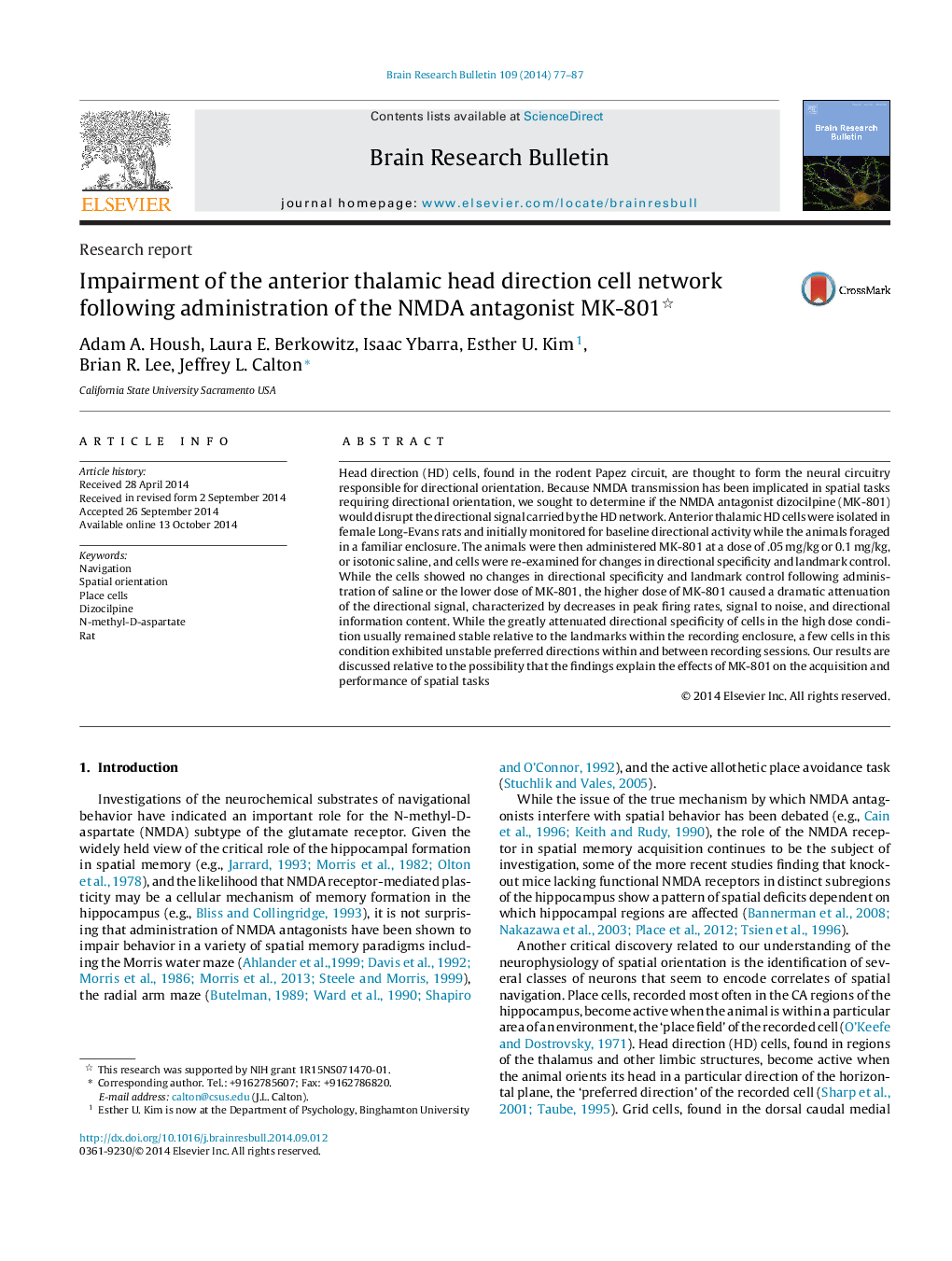| Article ID | Journal | Published Year | Pages | File Type |
|---|---|---|---|---|
| 6261729 | Brain Research Bulletin | 2014 | 11 Pages |
â¢Systemic NMDA blockade disrupted the HD signal in a dose-dependent manner.â¢MK-801 at 0.1 mg/kg greatly weakened HD cell directional-specific activity.â¢This may provide a mechanism by which MK-801 interferes with spatial learning.
Head direction (HD) cells, found in the rodent Papez circuit, are thought to form the neural circuitry responsible for directional orientation. Because NMDA transmission has been implicated in spatial tasks requiring directional orientation, we sought to determine if the NMDA antagonist dizocilpine (MK-801) would disrupt the directional signal carried by the HD network. Anterior thalamic HD cells were isolated in female Long-Evans rats and initially monitored for baseline directional activity while the animals foraged in a familiar enclosure. The animals were then administered MK-801 at a dose of .05Â mg/kg or 0.1Â mg/kg, or isotonic saline, and cells were re-examined for changes in directional specificity and landmark control. While the cells showed no changes in directional specificity and landmark control following administration of saline or the lower dose of MK-801, the higher dose of MK-801 caused a dramatic attenuation of the directional signal, characterized by decreases in peak firing rates, signal to noise, and directional information content. While the greatly attenuated directional specificity of cells in the high dose condition usually remained stable relative to the landmarks within the recording enclosure, a few cells in this condition exhibited unstable preferred directions within and between recording sessions. Our results are discussed relative to the possibility that the findings explain the effects of MK-801 on the acquisition and performance of spatial tasks
